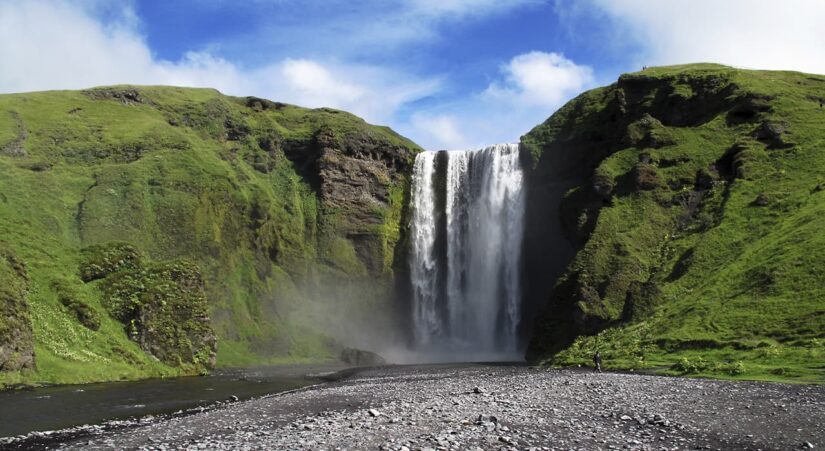Water on Earth
Water is a chemical compound consisting of hydrogen and oxygen and is essential for the life of all known forms of life. In the usual sense, the term water is associated only with the liquid form or states, but the substance also has a solid state (ice) and a gaseous state – water vapor. Water covers 71% of the Earth’s surface and is concentrated mainly in the oceans and other large bodies of water. In addition, about 1.6% of water is underground in aquifers and about 0.001% in the air in the form of vapor and clouds (formed from solid and liquid water particles), as well as precipitation. Oceans contain 97% of surface water, glaciers and polar caps about 2.4%, rivers, lakes and ponds – 0.6%. In addition, a small amount of water on Earth is contained in biological organisms and human products.
Oceans
The ocean contains the bulk of the Earth’s salt water and is also the main component of the hydrosphere. Although it is generally accepted that the Earth’s water space is divided into several separate oceans, together they constitute one global, interconnected mass of salt water, often referred to as the oceans or global ocean. About 71% of the Earth’s surface (361 million km2) is covered by the oceans. The depth in most of the oceans exceeds 3000 m, and the average salinity is about 35 parts per thousand (ppt), i.e. 3.5%.
The main boundaries of the oceans are defined by continents, various archipelagos and other criteria. The following oceans are distinguished on Earth (in descending order of size): Pacific Ocean, Atlantic Ocean, Indian Ocean, Southern Ocean and Arctic Ocean. Parts of the oceans surrounded by land or elevations of underwater relief are called seas, gulfs, bays. There are also salt water bodies on Earth that are smaller and not connected to the oceans. Two typical examples are the Aral Sea and the Great Salt Lake.
Lakes
A lake is a component of the hydrosphere, which is a natural or artificially created body of water filled within a lake basin (lake bed) with water and not directly connected to the sea (ocean). On Earth, a body of water is considered a lake if it is not part of the oceans, is larger and deeper than a pond, and is fed by river waters. The only known place, except for the Earth, where lakes are fed by external sources is Titan – the largest satellite of Saturn. On the surface of Titan, scientists have found lakes of ethane, most likely mixed with methane. Now the sources of feeding Titan’s lakes are not known exactly, but its surface is carved by numerous riverbeds. Natural lakes on Earth are usually found in mountainous areas, rift zones, and in areas with ongoing or recent glaciation. Other lakes are found in drainless areas or along the course of large rivers. In some parts of the world, lakes are present in large numbers due to the chaotic drainage patterns left over from the last ice age. All lakes are temporary formations on geological time scales, as they will slowly fill in with sediments or drain out of the basins containing them.
Ponds
Pond – a body of standing water, natural or artificial, with dimensions smaller than a lake. Ponds are a variety of artificial reservoirs: water gardens intended for aesthetic decoration, fish ponds intended for commercial fish farming and solar ponds for thermal energy storage. Ponds and lakes differ from streams by the speed of water flow.
Rivers
A river is a natural watercourse (stream) flowing in a permanent natural channel and fed by surface and groundwater runoff from its basin. Usually, a river flows into the ocean, sea, lake or another river, but in some cases it can get lost in sands or swamps, as well as completely dry up before reaching another body of water. Stream, channels, spring, spring, key are considered small rivers. A river is part of the hydrological cycle. Water in rivers is usually collected by precipitation through surface runoff, melting of natural ice and snow cover, as well as groundwater and springs.
Streams
A stream is a small watercourse, usually a few tens of centimetres to several metres wide. Streams are important as channels in the water cycle, deep drainage tools, and corridors for fish and wildlife migration. The biological environment in the immediate vicinity of streams is called the riparian zone. Given the status of the Holocene extinction event, streams play an important role in connecting fragmented habitats and thus in conserving biodiversity. The study of streams and waterways is the study of surface hydrology and is a core element of ecological geography.
